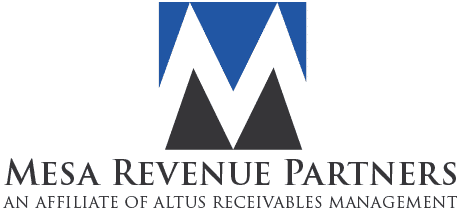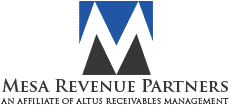Streamlining Recovery With Smarter, Faster Collection Processes
Chasing overdue payments can be exhausting, especially when juggling hundreds or even thousands of accounts. Between missed follow-ups, delayed updates, and frustrated customers, traditional debt collection methods can quickly become inefficient. So how can lenders recover more, faster, and with less manual effort?
The answer lies in automation. By streamlining tasks like borrower communication, payment reminders, and agent assignments, automation helps collection teams work smarter and not harder. Whether you’re dealing with early-stage defaulters or high-risk accounts, the right tools can boost recovery rates, cut operational costs, and improve customer experience.
In this article, we’ll explore five practical ways to improve your debt collection process through automation so you can stay ahead of the curve and focus on what matters most: results.
Why Automating Debt Collection Is a Game-Changer For Efficiency & Recovery
Automation tackles one of the biggest issues in lending: the time and resources lost to manual processes. Chasing down default cases is already a major challenge, but much of the delay in loan recovery actually comes from within. It comes from things like manually assigning tasks, updating payment statuses, recording call activity, or tracking field agents.
When systems aren’t connected, and everything from communication to case allocation is done by hand, the process becomes slow, error-prone, and costly.
That’s where automation steps in. A digital, CRM-based debt collection system can streamline every part of the recovery process—from identifying overdue accounts to sending reminders and processing payments.
It also reduces repetitive tasks, connects teams, improves transparency, and boosts agent productivity. Most importantly, it speeds up recovery time while keeping the borrower experience more personalized and responsive.
In short, automation removes the bottlenecks that hold traditional debt collection back and replaces them with speed, clarity, and measurable results.
Key Ways To Automate Debt Collection
Let’s now focus on the debt collection aspect of loan management and how digital automation is making it more efficient.
1. Maintain An Updated Borrower Profile
Outdated or inaccurate borrower data is one of the leading causes of failed collections and complaints; especially when collectors pursue debts that don’t belong to the right person.
Automating the borrower data management process ensures that all profile details are up-to-date and sourced from verified channels like CIBIL, Experian, or social platforms.
Automation also helps segment borrowers based on loan type, payment status, and risk category, making it easier to prioritize efforts. With a centralized Collections CRM, teams avoid switching between platforms and gain access to accurate, real-time data in one place.
2. Focus On Priority Accounts & Delinquent Cases
Some cases require immediate attention, especially disputed accounts that must be resolved within a legal time frame. Manually identifying and prioritizing these accounts is time-consuming and can lead to a few errors.
Automated debt collection software assigns priority levels based on factors like Days Past Due (DPD), risk level, and loan type. It also streamlines case allocation by routing tasks to the correct team (call center, field agent, or agency) and setting up reminders to ensure no follow-up is missed.
3. Track Collector Performance In Real Time
Without visibility into field agents’ activities, it’s difficult to assess performance or detect inefficiencies. Automation tools use geolocation tracking, geofencing, and mobile check-ins to ensure authenticity and accountability in agent operations.
Key metrics such as DSO, RPC, PTP, CEI, and PPA can be automatically recorded and analyzed, offering a clear picture of each agent’s contribution and highlighting where improvements are needed. Here’s how it works:
- Days Sales Outstanding (DSO): This metric calculates the average time it takes to collect payments from debtors.
- Right Party Contacts (RPC) rate: This ratio indicates the percentage of outbound calls made to a valid debtor, highlighting the likelihood of successfully locating the debtor.
- Promise to Pay (PTP) rate: It records the number of outbound calls that result in a debtor committing to pay within a specified timeframe.
- Collector Effective Index (CEI): It measures the amount collected by a collector against the total number of receivables within a specific period.
- Profit per Account (PPA): This metric shows the average profit generated by each account in collections.
4. Boost Collector Productivity With Mobile Tools
Modern debt collection doesn’t require stacks of paperwork. With mobile collection apps, field agents can carry everything they need on their phones: borrower data, payment history, route planning, reminders, and task lists.
Automation empowers collectors to stay organized, reduce delays, and respond quickly, leading to more productive field operations and better borrower engagement.
5. Measure & Analyze Performance With Dashboards
Data without insights is wasted potential. Automated dashboards provide real-time visibility into key performance indicators, collection trends, repayment stages, and agent activities.
With access to smart reports and analytics, decision-makers can track ROI, identify bottlenecks, and coordinate efforts across teams, ensuring a more strategic, results-driven approach to debt collection.
Benefits Of Automating Debt Collection
Automating debt collection offers many benefits that improve both operational efficiency and recovery outcomes. Here are some of them:
- Faster recovery times: Automation speeds up every stage of the collection process. With automated triggers and real-time updates, follow-ups happen on time, reducing delays and increasing the likelihood of recovering debts earlier.
- Reduced human error: Manual data entry and case handling often lead to mistakes. Automation minimizes these risks by ensuring consistent workflows, accurate information updates, and integrated communication across systems.
- Improved agent productivity: Collectors no longer need to juggle spreadsheets, documents, and separate systems. With mobile access, task automation, and guided workflows, they can focus more on engaging with borrowers and less on admin work.
- Better customer experience: Automation enables personalized, timely communication across multiple channels (SMS, email, WhatsApp, etc.). Borrowers receive reminders, payment links, and support when they really need it.
- Data-driven decisions: With built-in analytics and smart dashboards, teams can track key metrics like Days Sales Outstanding (DSO), Promise to Pay (PTP) rates, and agent performance.
Why Partnering with Experts Can Enhance Your Automated Debt Collection Strategy
Whether you’re looking to reduce operational burdens, improve recovery timelines, or enhance your team’s productivity, automation offers a clear path forward. But technology alone isn’t enough. Partnering with a trusted commercial collection agency can take your recovery efforts even further.
Mesa Revenue Partners combines decades of industry experience with modern, tech-driven solutions to help businesses recover outstanding debts efficiently and professionally. From automated processes to personalized recovery strategies, our team ensures that every account is handled with care, compliance, and results in mind.
Ready to recover more with less stress? Contact us at Mesa Revenue Partners today!








